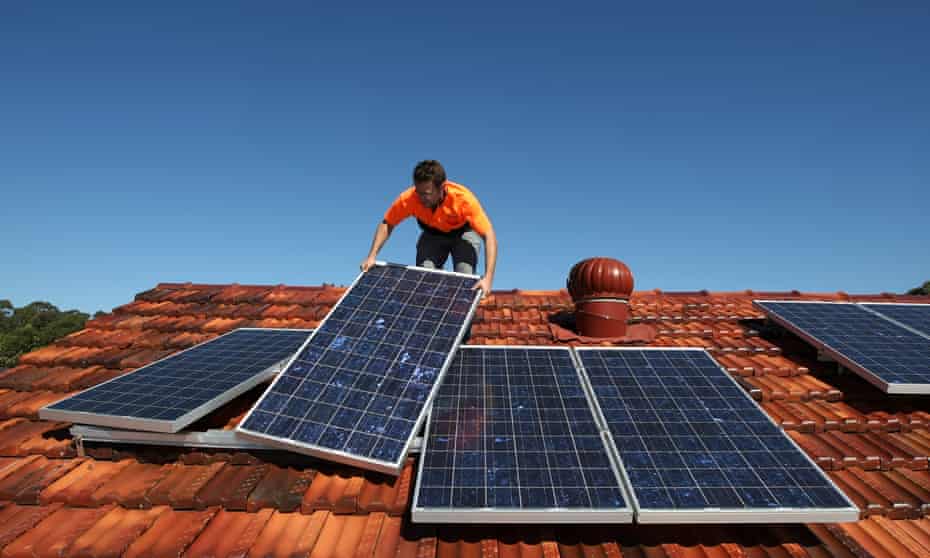Australia can’t reach net zero unless it helps people on low incomes transition to clean energy
The Morrison government’s technology and market-driven response will not drive down emissions in a fast and fair way

For more than 30 years, scientists and communities most at risk of life-threatening global warming have pleaded with political leaders and polluting industries to take concrete action to cut carbon emissions, protect people and forge a sustainable future for the planet.
Instead, for over 30 years, we have had political leaders and industry “debate” whether climate change is real, hold “conversations” about what to do about it, and embark on “journeys”, not concrete plans.
For over 30 years, scientists, experts and affected communities have also warned that climate change will cause more severe social and economic inequalities including hurting people’s jobs, homes and health. People and countries with the least are hit first, worst and longest from global warming, as our recent Black Summer wildfires powerfully demonstrated.
People most at risk – people on low incomes, First Nations communities, people living in low-lying regions, workers and communities in fossil fuel-reliant regions, including within wealthy countries – are already paying a heavy price as the climate changes, sea levels rise, and global markets move.
As global leaders gathered in Rome for the G20 on the weekend, and now on to Glasgow for the UN climate conference, the world is on red alert. Yet the G20 again failed to deliver what is necessary, with the Australian government reportedly intervening to prevent concrete commitments for fast, fair climate action in the final G20 communique.
Australia is one of the wealthiest countries in the world, with access to the best of technologies and an abundance of potential renewable energy sources. However, instead of being a global leader, the Australian government has shamefully turned up to the G20 and the UN climate conference with some of the lowest 2030 emissions reduction targets, a determination to keep investing in carbon-emitting fossil fuels and a “journey” not a concrete plan that fails to protect people most at risk, particularly people on low incomes, both within our own country and globally.
About three million Australian households now enjoy the bounty of clean, cheap renewable energy through rooftop solar. At the same time, there are least three million people living below the poverty line, who mostly live in badly designed inefficient “heat-boxes” with poor ventilation and no insulation, that are expensive to heat and cool. On average, people on low incomes pay four times as much for their energy bills by income as people on higher incomes.
Already, people who can afford it are moving to safer ground while those without resources are stranded. People with resources are also availing themselves of hybrid and electrical vehicles, again leaving people on low incomes with fuel-guzzling, polluting, expensive transport.
The technology and market-driven response of the government will not ensure that people on low incomes are able to enjoy the multiple benefits from the transition to a clean economy. We need a plan that puts at its centre the practical policies that will improve the lives of people facing disadvantage and transform our regions and economy to drive down emissions in a fast and fair way.
Quick GuideHow to get the latest news from Guardian AustraliaShow

Email: sign up for our daily morning briefing newsletter
App: download the free app and never miss the biggest stories, or get our weekend edition for a curated selection of the week’s best stories
Social: follow us on YouTube, Facebook, Instagram, Twitter or TikTok
Podcast: listen to our daily episodes on Apple Podcasts, Spotify or search “Full Story” in your favourite app
For example, Australia could relieve the suffering of millions of people living in sub-standard housing, create jobs and cut emissions. Our carefully co-designed plan for large-scale energy efficiency and rooftop solar has been fully costed showing that for a modest investment of $5,000 per residential property, we would create thousands of jobs and boost the economy by billions at scale, delivering improvements for almost 2 million low-income homes, making them easier and cheaper to heat and cool with major health benefits.
Where are the policies to mandate energy efficiency standards in all rental properties? Where are the policies to mandate that new builds are built for the future, higher than seven-star efficiency ratings, provide for electrical charger, and rooftop solar? Where’s the plan to electrify homes and help low-income homes make the switch? Where are the policies to put First Nations communities at the centre of planning and implementing zero carbon solutions and care for country? Or the plans to support local communities to lead their futures out of fossil fuel industries into the abundance of new clean jobs, if policy and investment signals are right?
Without a focus on how we can help people on the lowest incomes, workers and communities transition to a clean energy future, Australia cannot meet net zero emissions targets at the rate required.
As political leaders gather in Glasgow, it is urgent that we all continue to speak up to demand the actions needed by political leaders for our people and our planet.
Acoss is proud to be a part of this national and global movement. As more than 100 community groups called for in the Australian Community Climate Declaration last month, we need #fastfairclimateaction now and in this decade. And we need the policies that protect people with the least, the most.
2050 is too late.
